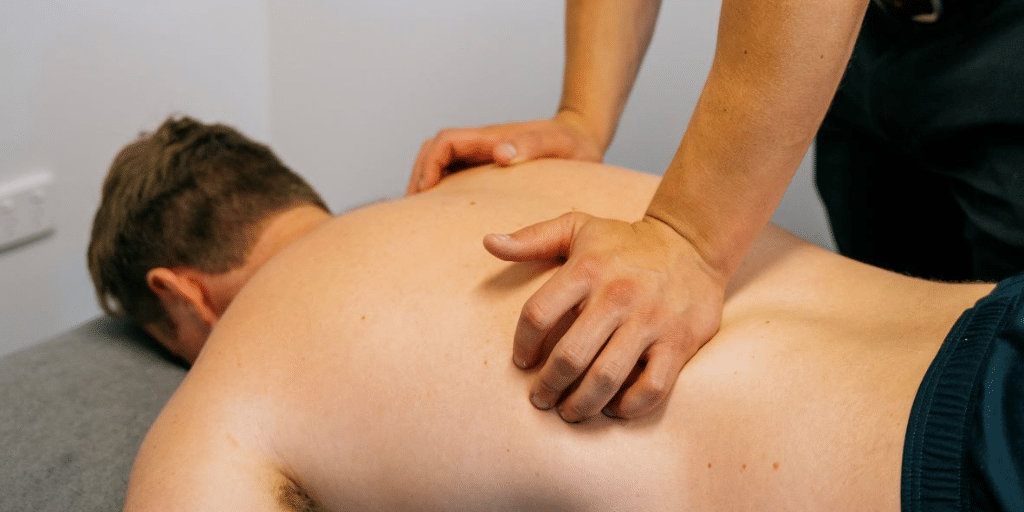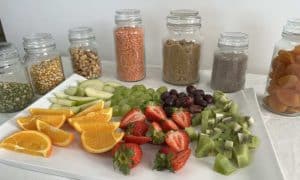Neck pain

How common is neck pain?
Research estimates between 25% and 70% of us will experience neck pain at some point in our lives, and 30-50% of us will experience it each year1.
What is the impact of neck pain?
The impact of neck pain varies, from a short period of low-grade pain, all the way through to neck pain that forces us to stop working and carry out our normal activities. When compared to other health issues, neck pain ranks in the top 10 health issues that contribute to years lived with disability around the world. Neck pain can also result in pain, tingling and numbness in other areas of your body, including your arms, upper back, face, and jaw. It can cause headaches, dizziness, and weakness in your arms and neck.
Is all neck pain the same?
No! Neck pain can be complex, and manifests differently. For instance, it can begin with:
- A clear mechanism and sudden onset: for example, immediate pain following a car accident, making a tackle in rugby, or heading a ball in football.
- A clear mechanism and gradual onset: for example, after regular breastfeeding of a newborn, spending more time using a laptop, or painting the ceilings in your house.
- No clear mechanism, or a mechanism that does not make much sense: for example, just lifting your head off the pillow, or bending to pick up a piece of paper.
Neck pain can come from many tissues (muscles, tendons, nerves, bones, discs, joints, ligaments, and blood vessels), and arise from many risk factors, including work, life and sporting demands; technique; fatigue; life stressors; other medical issues; and your previous experiences of pain and injury.
This means that a well-trained Physiotherapist will spend some time:
- Understanding what makes your particular neck pain unique
- Ruling out the nastier but rare causes of your pain that need specific imaging and/or onward referral
- Ensuring that you get treatment that is targeted specifically to you (your neck pain, your lifestyle, and your needs).
Are there treatments that can help me recover?
There are a wide variety of treatments for neck pain, ranging from targeted manual therapy and specific exercise, through to your great uncle’s neighbour’s cousin’s magical cream. But not all treatments will help, and some can actually be harmful. Fortunately, a lot of quality research has helped us identify which treatments will best help you and your neck pain, which treatments will just waste your time and money, and which might actually be harmful. The data suggests there are 3 key ingredients to success:

- Early intervention: Having quality Physiotherapy early for spinal related pain has shown to result in better outcomes, including: less pain and disability at follow-up2,3, earlier return to work4,5, less healthcare related costs2,6,7,and less risk of being placed on risky medications or undergoing surgery3,8,9.
- Specific exercise: exercise interventions targeting the neck, shoulder and upper back have shown better effect on reducing neck pain, and disability when compared to other treatments and to less targeted exercises10-13. Unsurprisingly, it has also been shown the more you do you your exercises, the better the effect12.
- Targeted manual therapy: A recent systematic review that looked at the results of all the previous studies that investigated the effect of targeted manual therapy on neck pain found that targeted manual therapy had better effects on pain and disability when compared to other recommended treatments (including exercise and medications), and non-recommended treatments (including electrotherapy, soft collar, massage, and acupuncture)14. Importantly, another recent systematic review found that combining exercise and manual therapy can have better effects on pain and disability than when used alone, and when compared to other interventions such as medications, advice, and dry needling15.
Summary
Neck pain is common, but can be complex. Seeking help early from a well-trained Physiotherapist will ensure that you get tailored interventions that is targeted specifically to your neck pain, your lifestyle, and your needs. See previous blogs on neck pain.
About the author
James Wallace is a Physiotherapist at Ethos Health. He has masters degrees in Sports and Musculoskeletal Physiotherapy and is currently completing a PhD on the management of neck pain in fighter pilots, following several years work as a physiotherapist dedicated to injury prevention and treatment in fast jet crews.

References
Blanpied, P. R., Gross, A. R., Elliott, J. M., Devaney, L. L., Clewley, D., Walton, D. M., … & Torburn, L. (2017). Neck pain guidelines: revision 2017. Journal of Orthopaedic & Sports Physical Therapy, 47(7), 511-512.
Fritz, J. M., Childs, J. D., Wainner, R. S., & Flynn, T. W. (2012). Primary care referral of patients with low back pain to physical therapy: impact on future health care utilization and costs. Spine, 37(25), 2114-2121.
Kim, H. S., Ciolino, J. D., Lancki, N., Strickland, K. J., Pinto, D., Stankiewicz, C., … & McCarthy, D. M. (2021). A Prospective Observational Study of Emergency Department–Initiated Physical Therapy for Acute Low Back Pain. Physical therapy, 101(3).
Campbell, P., Pope, R., Simas, V., Canetti, E., Schram, B., & Orr, R. (2022). The Effects of Early Physiotherapy Treatment on Musculoskeletal Injury Outcomes in Military Personnel: A Narrative Review. International Journal of Environmental Research and Public Health, 19(20).
Tousignant-Laflamme, Y., Houle, C., Longtin, C., Gérard, T., Lagueux, E., Perreault, K., … & Décary, S. (2023). Prognostic factors specific to work-related musculoskeletal disorders: An overview of recent systematic reviews. Musculoskeletal Science and Practice.
Liu, X., Hanney, W. J., Masaracchio, M., Kolber, M. J., Zhao, M., Spaulding, A. C., & Gabriel, M. H. (2018). Immediate physical therapy initiation in patients with acute low back pain is associated with a reduction in downstream health care utilization and costs. Physical Therapy, 98(5), 336-347.
Marrache, M., Prasad, N., Margalit, A., Nayar, S. K., Best, M. J., Fritz, J. M., & Skolasky, R. L. (2022). Initial presentation for acute low back pain: is early physical therapy associated with healthcare utilization and spending? A retrospective review of a National Database. BMC health services research, 22(1), 851.
Arnold, E., La Barrie, J., DaSilva, L., Patti, M., Goode, A., & Clewley, D. (2019). The effect of timing of physical therapy for acute low back pain on health services utilization: a systematic review. Archives of physical medicine and rehabilitation, 100(7), 1324-1338.
Gellhorn, A. C., Chan, L., Martin, B., & Friedly, J. (2012). Management patterns in acute low back pain: the role of physical therapy. Spine, 37(9), 775.
Gross, A. R., Paquin, J. P., Dupont, G., Blanchette, S., Lalonde, P., Cristie, T., … & Cervical Overview Group. (2017). Exercises for mechanical neck disorders: A Cochrane review update. Manual therapy, 24, 25-45.
Martin-Gomez, C., Sestelo-Diaz, R., Carrillo-Sanjuan, V., Navarro-Santana, M. J., Bardon-Romero, J., & Plaza-Manzano, G. (2019). Motor control using cranio-cervical flexion exercises versus other treatments for non-specific chronic neck pain: a systematic review and meta-analysis. Musculoskeletal Science and Practice, 42, 52-59.
Mueller, J., Weinig, J., Niederer, D., Tenberg, S., & Mueller, S. (2023). Resistance, motor control and mindfulness-based exercises are effective for treating chronic non-specific neck pain: A systematic review with meta-analysis and dose-response meta-regression. Journal of Orthopaedic & Sports Physical Therapy, (0), 1-39.
Villanueva-Ruiz, I., Falla, D., & Lascurain-Aguirrebeña, I. (2022). Effectiveness of specific neck exercise for nonspecific neck pain; usefulness of strategies for patient selection and tailored exercise—a systematic review with meta-analysis. Physical Therapy, 102(2).
Minnucci, S., Innocenti, T., Salvioli, S., Giagio, S., Yousif, M. S., Riganelli, F., … & Mourad, F. (2023). Benefits and harms of Spinal Manipulative Therapy for treating recent and persistent nonspecific neck pain: a systematic review with meta-analysis. Journal of Orthopaedic & Sports Physical Therapy, 53(9), 510-528.
Castellini, G., Pillastrini, P., Vanti, C., Bargeri, S., Giagio, S., Bordignon, E., … & Bertozzi, L. (2022). Some conservative interventions are more effective than others for people with chronic non-specific neck pain: a systematic review and network meta-analysis. Journal of Physiotherapy.






